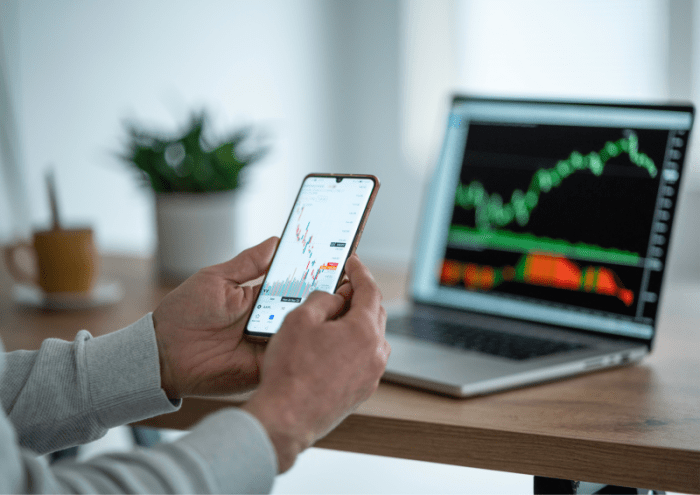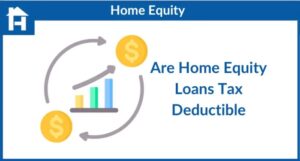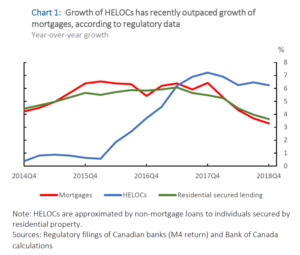
Forex day trading is like a thrilling rollercoaster ride through the currency markets, where fortunes can be made or lost in the blink of an eye! Imagine being a financial ninja, deftly dodging risks while executing precise moves with your trading strategies. With a blend of technical indicators and a sprinkle of risk management, traders embark on an adventure filled with excitement and maybe just a touch of caffeine-fueled panic!
From the intricacies of leveraging your capital to the savvy management of financial metrics, this guide dives into the dynamic world of Forex day trading. Buckle up as we explore the essential techniques, financial considerations, and even some delightful detours into related topics that could impact your trading journey!
Forex Day Trading Techniques
Forex day trading is like a rollercoaster ride through a financial theme park—thrilling, fast-paced, and sometimes a little nauseating. With pips flying around like confetti, traders must master the art of timing and strategy to capitalize on currency fluctuations. This guide dives into the various strategies and tools that can help traders navigate the wild world of Forex day trading.
Strategies for Forex Day Trading
In the bustling world of Forex day trading, a variety of strategies is employed to seize profitable opportunities. Each method offers unique advantages, but they all require a keen eye and quick reflexes. Here are some popular strategies that traders often embrace:
- Scalping: This strategy involves making rapid trades to exploit minor price movements. Scalpers often enter and exit positions within minutes, aiming to accumulate small profits that add up over time.
- Momentum Trading: Focused on capitalizing on strong price movements, momentum traders look for currencies that are moving significantly in one direction. They often ride the wave until signs of reversal appear.
- Range Trading: This technique is based on determining support and resistance levels. Traders buy at support and sell at resistance, making the most of price fluctuations within a defined range.
Understanding and selecting the right strategy can mean the difference between sweet victory and a heart-wrenching loss.
Technical Indicators Utilized in Forex Trading
Technical indicators are the trusty sidekicks of Forex day traders, helping them decipher market trends and make informed decisions. These tools provide insights that might otherwise go unnoticed amid all the currency chaos. Here are some of the most commonly utilized indicators:
- Moving Averages: These indicators smooth out price data to help traders identify trends over specific periods. The 50-day and 200-day moving averages are particularly popular for spotting potential reversals.
- Relative Strength Index (RSI): A momentum oscillator that measures the speed and change of price movements. RSI values of over 70 indicate overbought conditions, while values below 30 suggest oversold conditions.
- Bollinger Bands: These bands consist of a simple moving average and two standard deviation lines, providing a visual representation of volatility. Traders often look for price action near the bands to signal potential entries or exits.
These indicators can serve as a trader’s compass, guiding their decisions through the unpredictable waters of Forex trading.
Importance of Risk Management in Forex Trading
In the high-stakes game of Forex day trading, risk management is the unsung hero—like a secret sauce that elevates a simple dish to culinary greatness. Without effective risk management, even the most skilled traders can find themselves in dire straits. Here are some essential aspects of risk management:
- Setting Stop-Loss Orders: A stop-loss order automatically closes a position at a predetermined level, limiting potential losses. It’s like having a safety net under a tightrope walker—crucial for maintaining balance.
- Position Sizing: Determining the appropriate size for each trade based on account size and risk tolerance is vital. A common rule of thumb is to risk no more than 1-2% of your trading capital on a single trade.
- Diversification: Spreading investments across various currency pairs helps to minimize risk. Just like not putting all your eggs in one basket—unless you want a messy omelet!
Effective risk management empowers traders to stay in the game longer, ensuring that they can weather the inevitable storms of the Forex market.
Financial Considerations for Forex Traders

Trading in the Forex market isn’t just about staring at charts and hoping for the best; it’s an intricate dance of numbers, risks, and financial finesse. Understanding the financial considerations is like knowing the choreography before stepping onto the dance floor. Let’s twirl through the essential elements that could make or break your trading experience, all while keeping our toes intact.
Impact of Leverage on Trading Outcomes and Risk
Leverage is the double-edged sword of Forex trading, where a small amount of capital can control much larger positions. It’s akin to using a magnifying glass to focus sunlight; it can help you spark a bonfire of profits, but if you’re not careful, you might just end up burning down the house! Here’s how to navigate this powerful tool effectively:
Leverage amplifies both potential gains and potential losses, so a well-thought-out leverage strategy is imperative.
The impact of leverage can be summarized as follows:
- With a leverage ratio of 100:1, a $1,000 deposit allows control over $100,000 in currency. This can lead to significant profits if trades go well, but also devastating losses if things turn sour.
- Understanding margin calls is vital; if your account value drops below a certain level, your broker might close your positions automatically. Think of it as your broker giving you a swift kick out the door!
Tips for Managing Trading Capital Effectively
Managing your trading capital is like managing your household budget—everyone wants more, but there’s only so much to go around. Here are a few golden nuggets to ensure your trading account doesn’t resemble a leaky bucket:
Effective capital management is the bedrock of long-term success in Forex trading.
To keep your finances safe and sound, consider the following strategies:
- Set a strict risk-reward ratio for each trade. For instance, aim for a 1:2 ratio, where you risk $1 to potentially make $2.
- Avoid risking more than 1-2% of your total capital on a single trade. This way, even a series of losses won’t wipe out your account faster than a magician’s disappearing act!
- Regularly review and adjust your trading plan. Just like updating your wardrobe, what worked last season might not suit the current trends of the market.
Key Financial Metrics to Monitor While Trading
Keep an eye on the financial metrics while trading; they are your compass in the turbulent seas of Forex. Ignoring them is like sailing without knowing your destination—bound to end up shipwrecked!
Monitoring key financial metrics ensures you stay informed and ready to make informed decisions.
Here are the essential metrics to track:
- Account Equity: Understand your total account balance, which includes your initial deposit and any profits or losses from trades.
- Margin Level: This percentage indicates how much of your equity is available for trading. A higher margin level means more breathing room for trades.
- Drawdown: Measure the peak-to-trough decline during a specific period; it helps assess the risk of your trading strategy.
- Return on Investment (ROI): This metric tells you how much profit you’ve made as a percentage of your initial investment. Keep it positive to avoid trading blues!
Related Financial Topics Impacting Forex Trading

In the whirlwind world of Forex trading, financial stability is not just a luxury; it’s a necessity. As traders navigate the turbulent waters of currency exchanges, understanding the broader financial landscape is crucial. This includes exploring debt consolidation options, the relevance of credit counseling, and the often-overlooked importance of estate planning. Buckle up, because we’re about to dive into a topic that could help keep your trading dreams afloat, even when the market feels like a rogue wave!
Debt Consolidation Options for Traders
Debt can feel like shackles on a trader’s ability to maneuver in the Forex market. Consolidating debt offers a lifebuoy, allowing traders to streamline their financial obligations and focus on what really matters: trading. Here’s how traders can tackle their debt consolidation options effectively:
- Home Equity Loans: Utilizing the equity in your home can provide a low-interest option for consolidating high-interest debts. Just remember, your house is not a piggy bank—treat it with respect!
- Personal Loans: These can be used to pay off multiple debts, often at a lower interest rate than credit cards. Think of it as a financial makeover—out with the old, in with the new!
- Balance Transfer Credit Cards: Moving debt to a card with a lower interest rate can save money over time. Just watch out for pesky fees creeping in like an unexpected market dip.
- Debt Management Plans: Credit counseling agencies can help negotiate lower interest rates with creditors and create a manageable payment plan. It’s like having a financial coach in your corner!
“Consolidating debt is like decluttering your financial closet—less mess means more room to grow!”
The Role of Credit Counseling for Forex Traders
Navigating credit can be as tricky as predicting market movements. Credit counseling provides traders with the tools and knowledge needed to manage their finances wisely. This service can be a game changer for those feeling overwhelmed by debts or poor credit.With credit counseling, traders can access personalized advice tailored to their unique situation. Counselors often assess your financial health, including income, expenses, and debts, to help create a strategy for improvement.
This can include budgeting tips, understanding credit scores, and managing loans effectively. Traders should consider the following benefits of credit counseling:
- Improved Credit Score: Learning how to manage debts can lead to significant improvements in your credit score, which is vital for favorable trading conditions.
- Budgeting Skills: Counselors often provide tools and strategies for better budgeting, ensuring you don’t blow your trading capital on unnecessary expenses.
- Debt Payoff Strategies: Tailored plans to tackle debts systematically can relieve financial stress, clearing your mind for trading strategies.
- Education on Financial Products: Gaining knowledge about different financial products helps you make informed decisions that can enhance your trading experience.
“Credit counseling is like having a financial GPS—guiding you away from pitfalls and toward success!”
Importance of an Estate Plan Trust for Currency Traders
For Forex traders, an estate plan trust isn’t just for the wealthy elite; it’s an essential tool for anyone engaged in currency trading. A well-structured estate plan ensures that your assets—trading accounts, investments, and more—are protected and distributed according to your wishes.Here’s why establishing a trust is vital for traders:
- Asset Protection: A trust can safeguard your assets from creditors or lawsuits, allowing you to trade without fear of losing everything in a financial storm.
- Efficient Transfer of Wealth: Trusts facilitate the transfer of assets to beneficiaries without the hassle of probate, which can be a lengthy and costly process.
- Tax Benefits: Certain types of trusts can minimize estate taxes, ensuring more of your hard-earned money goes where you want it to go, rather than to Uncle Sam.
- Control Over Distribution: A trust allows you to dictate when and how your assets are distributed, providing peace of mind that your loved ones will be cared for.
“An estate plan trust is like having a trading plan for your life—ensuring every move counts!”
Concluding Remarks
As we wrap up this exhilarating exploration of Forex day trading, remember that every trader is a unique adventurer navigating the turbulent sea of currency exchanges. With the right strategies, risk management, and financial know-how, you’re not just surviving—you’re thriving! So grab your trading gear, keep your eyes on the charts, and may your pips always be profitable!
FAQ Summary
What is the best strategy for Forex day trading?
There’s no one-size-fits-all answer, but many traders find success with scalping, momentum trading, or using a combination of technical analysis and price action strategies.
How much capital do I need to start Forex day trading?
While you can start with as little as $100, a more comfortable amount might be $500 to $1,000 to allow for better risk management and the ability to withstand market fluctuations.
Is Forex day trading suitable for beginners?
Absolutely! However, beginners should invest time in education and practice with demo accounts before risking real money in the fast-paced Forex market.
How important is risk management in Forex day trading?
Extremely important! Implementing a solid risk management strategy can help protect your capital and minimize losses, allowing you to trade with confidence.
Can I use automated trading systems for Forex day trading?
Yes, many traders use automated systems or trading bots to execute trades based on predefined criteria, but it’s crucial to monitor their performance and adjust settings as needed.





